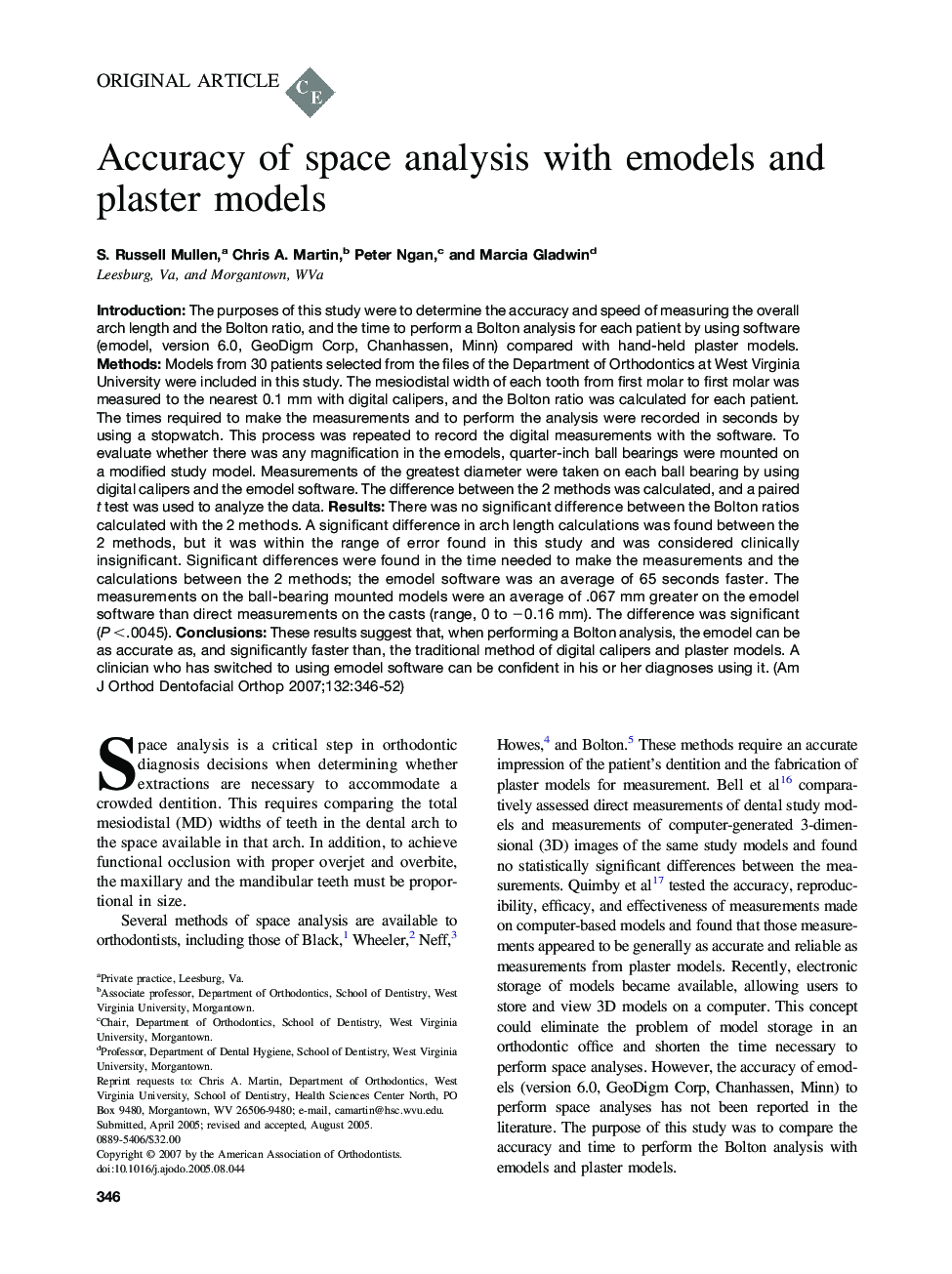| Article ID | Journal | Published Year | Pages | File Type |
|---|---|---|---|---|
| 3118931 | American Journal of Orthodontics and Dentofacial Orthopedics | 2007 | 7 Pages |
Introduction: The purposes of this study were to determine the accuracy and speed of measuring the overall arch length and the Bolton ratio, and the time to perform a Bolton analysis for each patient by using software (emodel, version 6.0, GeoDigm Corp, Chanhassen, Minn) compared with hand-held plaster models. Methods: Models from 30 patients selected from the files of the Department of Orthodontics at West Virginia University were included in this study. The mesiodistal width of each tooth from first molar to first molar was measured to the nearest 0.1 mm with digital calipers, and the Bolton ratio was calculated for each patient. The times required to make the measurements and to perform the analysis were recorded in seconds by using a stopwatch. This process was repeated to record the digital measurements with the software. To evaluate whether there was any magnification in the emodels, quarter-inch ball bearings were mounted on a modified study model. Measurements of the greatest diameter were taken on each ball bearing by using digital calipers and the emodel software. The difference between the 2 methods was calculated, and a paired t test was used to analyze the data. Results: There was no significant difference between the Bolton ratios calculated with the 2 methods. A significant difference in arch length calculations was found between the 2 methods, but it was within the range of error found in this study and was considered clinically insignificant. Significant differences were found in the time needed to make the measurements and the calculations between the 2 methods; the emodel software was an average of 65 seconds faster. The measurements on the ball-bearing mounted models were an average of .067 mm greater on the emodel software than direct measurements on the casts (range, 0 to −0.16 mm). The difference was significant (P <.0045). Conclusions: These results suggest that, when performing a Bolton analysis, the emodel can be as accurate as, and significantly faster than, the traditional method of digital calipers and plaster models. A clinician who has switched to using emodel software can be confident in his or her diagnoses using it.
